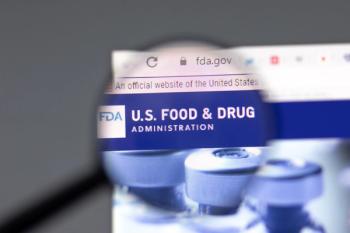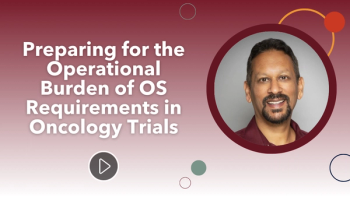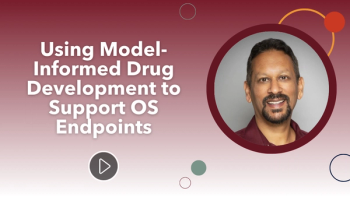
- Applied Clinical Trials-06-01-2010
- Volume 0
- Issue 0
Changing Medicines, Changing Rules
New guidelines are being developed in Europe to address questions regarding stem-cell medicines.
Despite the novel possibilities presented by stem-cell medicines, their progress from bench to bedside should generally follow the classic approach for other types of medicines, the European Medicines Agency believes. "The clinical development plan should follow corresponding EU guidance on medicinal product and specific relevant guidance for the diseases to be treated," says new draft guidance recently released by the agency.
Peter O'Donnell
The draft is part of an initiative by the agency to bring additional clarity to some of the vexed questions surrounding stem-cell medicines in Europe. The "reflection paper on stem cell-based medicinal products" has been developed by the agency's cell-based products working party "to communicate the current status of discussions and to invite comments in the area of stem-cell based medicinal product development, where scientific knowledge is fast evolving and regulatory experience is limited."
Scientific knowledge is not advancing fast enough to dispense routinely with some of the basic requirements in development. "Nonclinical evidence on the proof-of-principle and safety of the stem-cell based product in a relevant animal model is expected before administration to humans," says the draft, underlining the particular importance of this step when the stem cells have been extensively manipulated ex vivo or where systemic administration is proposed.
Open-minded
However, the agency is demonstrating an open-minded approach, and some concessions are made to the specific problems thrown up by trials in this area. So a number of exceptions to the general rules are foreseen.
In cases where sufficient proof-of-concept and safety cannot be established in the nonclinical studies—because, for instance, of "justified difficulties" in finding an appropriate animal model—evidence can instead be generated in clinical studies by including additional endpoints for efficacy and safety that address the effect of the microenvironment on the stem cell.
Stem Cell Exploration
There is similar flexibility on dose finding studies. As a general rule, the effective range of stem cells and/or stem-cell derived cells administered should be defined during dose finding studies, so as to identify a safe and effective treatment dose, and where possible, the minimally effective dose. But where formal dose finding is not feasible (such as for CNS or myocardium indications, requiring administration in vulnerable sites), an initial human clinical trial may be appropriate with a dose that could have a therapeutic effect, as long as this is justified on the basis of available nonclinical evidence for safety.
And while clinical trials to study efficacy should normally follow the relevant available guidance in the target indication, using clinically meaningful endpoints related to the pharmacodynamic effect of the product, the guidance offers some readiness to look at alternatives. Applicants are advised to discuss the design and endpoints of the studies with the authorities in cases where pivotal clinical studies differ significantly from those studies conducted for other products in the same indication.
But strict
The draft guidance is nonetheless strict on special recommendations for these products. In terms of pharmacovigilance, it says that clinical trials should ideally confirm the mode of action identified during the preclinical studies—which may be directly dependent on the stem cell population, molecules secreted by the cells or their engraftment in the host tissue. And because the stem cells may be in various differentiation stages when they are administered, the selected biomarkers should be capable of following the differentiation status at the time of administration and during in vivo follow-up of the cell population.
It also insists that the follow-up of efficacy and safety is highly dependent on the mode of action related to either their pharmacological, immunological, and/or metabolic effect (if it is a cell-therapy medicinal product) or regenerative, repair, and/or replacement effect (if it is a tissue-engineered product).
On pharmacokinetics, it acknowledges that biodistribution studies to determine the fate of the stem-cell transplant in the body may be difficult to perform in humans. But it offers no general escape clause. For products with a higher risk profile, "these studies may be important," it goes on. There should be ways to follow the cells during the clinical studies, and they should be utilized, with possible markers and tracers evaluated and justified. If the administered stem cells are detected in places other than where they are intended, this too should be investigated, it urges. For advanced therapy medicinal products based on stem cells, the importance is stressed on evaluating the time to engraftment and to achieve the clinical outcome, in order to correctly define the cell population required for such an in vivo effect.
Specific additional measures are envisaged on purity. The draft guidance notes "substantial theoretical concern" that even minor contamination at the level of a single proliferating cell with deleterious properties could be clinically important, and may need to be addressed in a nonclinical model through the use of immuno-suppressed or constitutively immuno-deficient animals and/or appropriate clinical follow-up.
And clinical safety should be governed by the same safety requirements as for other medicinal products, again with special provisions for special risks. Unique risk factors for stem-cell based products should be addressed—including the capability of human embryonic stem cells to form teratomas, and their self-renewal characteristics, which make it probable that some cells with sufficient plasticity persist in any stem-cell-derived product. As a further small concession, the safety follow-up can be combined with a parallel efficacy follow-up, but both should have suitable surrogate endpoints, since—as the guidance remarks—"clinical safety and efficacy may be apparent only after several years."
Risk-based approach
The concessions spring largely from the risk-based approach that is being recommended to get the best balance between safety and effectiveness in product development. One of the key figures behind this is Paula Salmikangas of the Finnish Medicines Agency, who is Chair of the cell-based products working party, as well as Vice-Chair of the EU's Committee on Advanced Therapies.
She told a meeting at the European Medicines Agency in mid-May that a risk-based approach can be applied for all cell-based products. She insisted that risk analysis should cover the whole development and should be used to determine the amount of data needed in the application for marketing authorization.
The cell-based products working party that Salmikangas chairs has a full agenda for 2010, with half a dozen plenary meetings and a series of business projects throughout the year. It is also producing a guideline on the application of the risk-based approach for advanced therapy medicinal products in the pre- and postauthorization phase—particularly how to perform and present this risk analysis for initial marketing authorization applications.
It is also drafting a reflection paper on clinical aspects specific to regenerative medicines, which will include recommendations for surgical trials and structural endpoints, and another on quality, nonclinical, and clinical aspects specific to autologous chondrocyte-based tissue engineered products, as well as a question and answer document on pharmaceutical, nonclinical, and clinical development of cell-based medicinal products, clarifying basic definitions for classification purposes, and the requirements for combined advanced therapy products.
A guideline on clinical postmarketing surveillance for cell-based medicinal products will follow later in the year, along with a guideline on the quality, preclinical and clinical aspects of medicinal products containing genetically modified cells.
In addition, the Committee on Advanced Therapies provides general advice on marketing authorization assessments, scientific advice, and protocol assistance, as well as specific advice on individual product applications, pharmacovigilance, certification of quality data, and classification of products.
Pharmacovigilance
Meanwhile, back in Brussels, separate discussion of proposed new rules on pharmacovigilance for the European Union look as if they may result in tougher requirements for continued demonstration of efficacy throughout a product's life. "Although safety monitoring happens throughout the life of a drug, efficacy is checked only once, at the time of authorization," remarked the European Parliament's health committee in its report on the draft law. "There should be the possibility to monitor drug efficacy postauthorization as well—in real world populations and real-life conditions," according to the report.
The committee's report envisages marketing authorization being made conditional on postauthorization safety and efficacy studies—for instance, "when scientific advances in the understanding of the disease or in the clinical methodology would significantly change previous efficacy evaluations." It also instructs the European Commission to produce a report on the concept of clinical effectiveness, and the studies and data required and the methodologies for assessing it.
This is the latest stage in discussions that have now gone on for 18 months on the proposal for a rule change. The next step is that the Parliament as a whole will vote on the issue, sometime in June, and a compromise will be sought with the 27 EU member states, who are discussing the proposal in parallel. Only then will the final text of the new law emerge—and there is at present no guarantee of what the final text will contain. But as they say in Brussels, un homme prévenu en vaut deux—forewarned is forearmed.
Peter O'Donnell is a freelance journalist who specializes in European health affairs and is based in Brussels, Belgium.
Articles in this issue
over 15 years ago
Applied Clinical Trials Digital Edition - June 2010over 15 years ago
Biosimilars Make Headwayover 15 years ago
Business and News Update June 2010over 15 years ago
Electronic Integration Costsover 15 years ago
Strategic Immunogenicity Testingover 15 years ago
ePRO vs. Paperover 15 years ago
Today's Global Site Landscapeover 15 years ago
Ethics Diversity Persistsover 15 years ago
Mastering Currency Fluctuationover 15 years ago
Just Breathe: COPD, Asthma FutureNewsletter
Stay current in clinical research with Applied Clinical Trials, providing expert insights, regulatory updates, and practical strategies for successful clinical trial design and execution.






.png)



.png)



.png)
.png)
